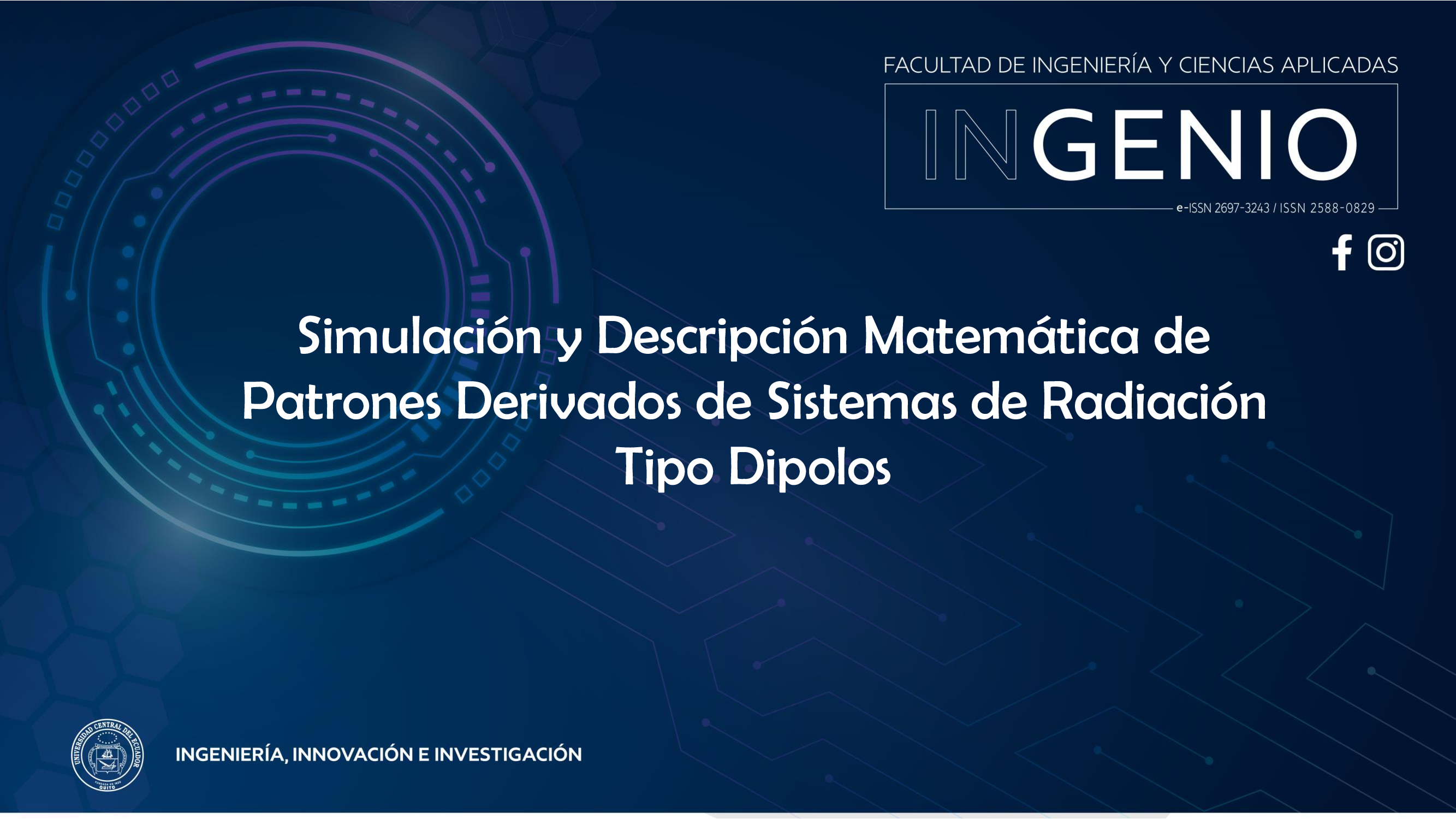Simulation and Mathematical Description of Patterns Derived from Dipol-type Radiation Systems
Main Article Content
Abstract
This work shares the research carried out on the modeling and simulation of linear dipole arrays. A generalized modeling is achieved, based on the models developed from the Pocklington integral applied to Yagi Uda arrays. Starting from the models found, they are simulated using the Method of Moments, generalizing what was previously developed for Yagi Uda arrays and their results are compared with patterns obtained through the free MMANA GAL simulator and with those given by the antenna manufacturers. An excellent match is obtained for both the simple dipole patterns and the Yagi Uda type arrays, but poor agreement is obtained for the radiation patterns for the Log Periodic type arrays.
Downloads
Metrics
Article Details

This work is licensed under a Creative Commons Attribution-NonCommercial-NoDerivatives 4.0 International License.
References
GALÁRRAGA, J., Simulación y Descripción Matemática de Patrones Derivados de Sistemas de Radiación Tipo Dipolos para señales de TDT ISDB-T Internacional, Master’s thesis, Universidad de las Fuerzas Armadas – ESPE, ag 2021.
C. BALANIS, Antenna Theory, analysis and Design, John Wiley & Sons, third ed., 2005.
I. CASTILLO, JOSÉ Y QUIROZ, Desarrollo de software para el diseño de antenas yagi-uda y reflector de esquina, Master’s thesis, Universidad San Francisco de Quito, dec 2009.
ZÚÑIGA, S. Jun 2014. MANUAL MMANA-GAL. Recuperado el 30 de octubre de 2023 de: http://www.ea1uro.com/pdf/Manual_XQ2CG_-_MMANA_Gal_v1.pdf .
ALCIVAR, R., Desarrollo de una plataforma virtual como apoyo para el aprendizaje autónomo de sistemas radiantes de Telecomunicaciones. (Tesis de Grado) Universidad Nacional de Chimborazo. Riobamba, Ecuador, nov. 2023.
ALVARADO, R. y DIETES, F., Plataforma Corporativa Grupo de Investigación en Nuevas Tecnologías (GNET), Oficina de investigaciones Unidades Tecnológicas de Santander, Colombia, feb. 2017.
SARKAR, T. K., DJORDJEVIC, A. R., & KOLUNDZIJA, B. M.. Method of moments applied to antennas. In Handbook of Antennas in Wireless Communications (pp. 8-1). CRC Press. 2018.
PÉREZ, J., et al. "Construcción y simulación de una antena Yagi-Uda de 550 MHz con MMana-Gal." Visum Mundi 5.1 (2021).
PRAMONO, EKO, y NUR WIDJIYATI. "Analisa Front To Back Ratio Antena Yagi Pada Sistem LoRa Di Frekuensi 915 Mhz Menggunakan Software MMANA-Gal." Smart Comp: Jurnalnya Orang Pintar Komputer 12.2 (2023): 347-355.
G. THIELE, Analysis of Yagi-Uda-Type Antennas, vol. AP-17 of IEEE Transaction on Antennas and Propagation, IEEE, first ed., jan 1969.
A. LUNA, Desarrollo de una guía para la representación 2d y 3d del diagrama de radiación de antenas, jul 2017.
A. Y PÉREZ, Antenas, Universidad de Cataluña, first ed., 2005.
P. L. Y. C. R. GÓMEZ J., Diseño de antenas yagi uda usando algoritmos genéticos, Ciencia Investigación Academia Desarrollo, 8 (2003), pp. 19–24.
KATHREIN, Selector de antena de transmisión.
ELEKTRONIK, Datasheet 9108, 2013

